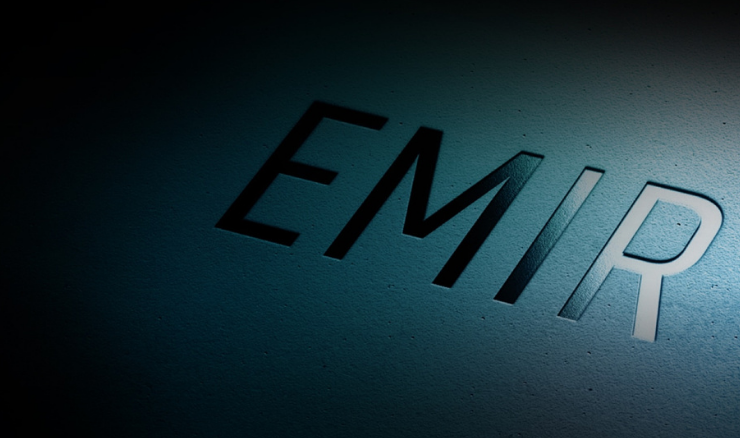
What is EMIR Reporting? 2021 Edition
Going live in 2014, EMIR reporting regulation has gone through a number updates in its seven year lifetime. With changes arriving with Brexit along with the REFIT update, it is time to provide a new version of our popular ‘What is EMIR Reporting’ blog that brings things up to speed with 2021.
The basics
Going live in 2014, EMIR has its roots in the 2009 G20 Pittsburg Summit. Following the great financial collapse of 2008/09, G20 leaders exited the meeting with an agreement to put in place new regulations to better monitor the derivatives market. In the EU, this led to the creation of the European Market Infrastructure Regulation, or better known as EMIR.
Some of the key characteristics of EMIR:
What trades are reported?
Details of all and any type of derivative transactions a firm enters in are required to be reported on within T+1. This includes trades that were entered for non-speculative reasons and included are all asset classes, and defined under EMIR as FX, Commodities, Interest Rates, Credit and Equities.
What’s in the report?
The report can be broken up to three sections; counterparty, trade and collateral/MTM details.
- Counterparty – Covers who is the reporting party, the other counterparty to the trade, venue (for ETDs), clearing details, some corporate details (for non-financial firms) and beneficiaries
- Trade – Includes execution and confirmation date/time, maturity/expiration date, buy/sell direction, price, price currency, product details such as ISIN (when applicable), CFI Code and notional currency and settlement details
- Collateral/MTM – EMIR regulation includes requirements for indicating details of collateral related to trades. Collateral fields include information on how collateral is posted between counterparties, initial margin and variation margin that is posted or received. For uncollateralized transactions, a mark to market (MTM) valuation amount needs to be submitted daily.
Double vs single sided reporting?
EMIR is referred to as a ‘double sided’ reporting regulation. In double sided reporting, both counterparties to a trade need to submit a report of their side of the trade. The submission requires using the same Unique Transaction Identifier (UTI) and economic details for the transaction. ESMA, TRs and National Competent Authorities (NCAs) conduct UTI pairing and transaction matching analysis to review that trades are being reporting similarly by both counterparties.
According to ESMA, in a review of January 2021 data, 51% of EMIR submissions were Paired.
Where are reports submitted to?
Reports are submitted to a regulatory approved Trade Repository (TR). Post Brexit, there are now FCA and ESMA regulated TRs for submissions for the UK and EU versions of EMIR (more on this in the Brexit section below).
List of Licensed Trade Repositories (as of June 2021)
UK FCA (link)
- ICE Trade Vault Europe Limited
- UnaVista Limited
- DTCC Derivatives Repository Plc
- REGIS-TR UK Limited
ESMA (link)
- REGIS-TR
- Krajowy Depozyt Papierów Wartosciowych S.A. (KDPW)
- UnaVista TRADEcho B.V. (The Netherlands)
- DTCC Data Repository (Ireland) Plc
What’s the difference between TRs?
There are two primary differences between TRs; submission templates and fees.
Templates: Despite a uniform version of fields and validations required by EMIR, each TR provides users their own Submission Specification file. Additional fields in the files include the ability to add identifiers related to delegated reporting and internal codes used to better split asset classes and venue traded products in post submission reports. All TRs support CSVs and may also allow for JSON, XML and other API based submissions.
Fees: Pricing also varies between repositories. Factors affecting pricing include number of transactions being reported, how many entities are being submitted for and whether delegation is being provided. TRs may also include discounted fees for products deemed high volume such as ETDs and CFDs. Depending on a firm’s account type, TRs also include annual and monthly caps on fees that are charged.
Who reports?
Both financial and non-financial corporations (NFC) are required to report under EMIR. The reporting party is the ultimate firm taking hold of the derivative contract traded. As such, in trades by an asset managers, the fund entity they transact for is listed as the counterparty for the trade.
Comparisons to other regimes
As mentioned above, EMIR is a dual-sided reporting regulation. In addition to both sides of trade being required to submit a report, UTIs and main economic fields also need to match between counterparties. This differs from other regimes around the world that are less strict in this regard. Both the US (Dodd-Frank Part 45 reporting) and Switzerland (FinfraG) derivative regulations are single-sided. Also, in Singapore (MAS) and Australia (ASIC) where double-sided reporting is required, there are leniencies related to UTI matching of certain products and exemptions for smaller firms of needing to report when their counterparties are reporting.
Another difference relates to products under scope. EMIR covers reporting for both OTC and exchange traded derivatives. This differs from other regimes such as the US, Switzerland and Singapore that exempt ETDs.
How Brexit changed things?
For the most part, EU and UK versions of EMIR are the same. But there are some points worth noting since Brexit occurred.
- Split TRs – As mentioned above, EMIR regulation is now split between ESMA and UK and firms need to submit reports to a TR in their jurisdiction. For firms with dual regulation, this means having a mechanism in place to identify which trades are from which entity and submit them to the proper TR.
- Delegation requirements removed – In June 2020, the initial stages of EMIR REFIT required financial firms to report on behalf of certain non-financial counterparties (NFC-). However, following Brexit, UK financial firms no longer need to provide delegated reporting for their EU NFC- clients and vice versa. Therefore, these NFC’s now face the requirement of reporting themselves.
- EU venue equivalence – EMIR includes equivalence of trades on certain non-EU venues to be considered venue traded products (ESMA venue equivalence list). After Brexit, the UK continued to include EU venues as equivalent to UK. However, equivalence by the EU wasn’t granted to UK venues. The result is that trades made on UK exchanges are considered fully OTC when reported under EMIR in the EU and require certain report changes compared to how they are reported in the UK.
- Future divergence – The UK is currently reviewing changes to both EMIR and MIFID II transaction reporting. For EMIR, this means analyzing how much of ESMA’s EMIR REFIT Final Report on Technical Standards that is expected to go live in 2023 does the UK want to adapt. This could lead to greater divergence between the regulations in the future.
Exemptions for NFC’s, clearing thresholds and EMIR REFIT
From June 2020, EMIR REFIT required financial counterparties (FC) to submit EMIR reports for NFC-’s in cases where they are a counterparty to their derivative trades. To be considered an NFC-, the firm is required to have traded below the clearing thresholds. Once trading above the clearing threshold, a firm becomes NFC+ and it triggers certain clearing requirements to be applied on their transactions.
Clearing Threshold Table (figures in gross notional value)
- OTC Credit derivative contracts – €1 billion
- OTC Equity derivative contracts – €1 billion
- OTC Interest rate derivative contracts – €3 billion
- OTC Foreign exchange derivative contracts – €3 billion
- OTC Commodity derivative contracts and others – €3 billion
Can you still delegate and what are the drawback?
Yes, as was the case in 2014 when EMIR went live, delegation continues to be available. The above-mentioned EMIR REFIT even ratified its obligation for certain counterparties. The advantage of report delegation is that it allows firms to rely on their counterparties to report on their behalf. Beyond the operational benefit this provides, it also reduces errors related to sharing and receiving UTIs that need to be matched. As a result, delegated reporting by the sell side for their buyside customers remains quite prevalent.
On the other hand, it is important to note that other than cases where delegation is required under EMIR REFIT, delegated reporting doesn’t exempt a firm’s responsibility to submit correct and accurate reports. A number of NCAs, including the CBOI and CSSF, have approached buy-side firms with questions on report accuracy and control mechanisms. This has led to renewed discussions of whether the risks of delegated reporting outweigh the rewards.
What have regulators been focused on?
Prior to Brexit, ESMA and local NCAs underwent a large scale EMIR review in 2018 and 2019. The results led to a number of key reporting issues and errors that were found.
- Counterparty matching – Beyond simply a lack of UTI mismatches, NCAs found many cases where one firm listed a company as a counterparty, but that firm wasn’t reported as a counterparty in the other side’s submissions. This could be traced back to non-complete reporting or the use of incorrect client identifies such as an Account Number instead of a Legal Entity Identifier (more on LEIs)
- Open positions – An area of focus on the 2018 ESMA review and again brought up in their 2021 EMIR review, ESMA found a large number of open positions that lacked recent valuation reports. They speculated that the cause of the issue were reporting transactions that were closed on a reporting firm’s books but a subsequent termination message was never submitted to a trade repository.
- Late Reporting – In their 2021 review, ESMA reported that 7% of EMIR submissions were reported late.
Any fines?
Overall, fines have been limited under EMIR with only five reporting firms getting penalized. The largest was a 2017 fine of £34.5m by the FCA on Merrill Lynch, followed by a €500,000 penalty by the AMF on BRED Banque Populaire. Smaller cases were a 2020 penalty by the CSSF on Edmond de Rothschild €20,000, €165,000 in two separate fines by COVIP on Fondo Pensione in 2017, and €1,000 fine imposed in 2019 by the HCMC on ARDU PRIME AEPEY.
Are cryptocurrency derivatives in scope?
Cryptocurrency derivatives such as bitcoin CFD pose an issue for EMIR reporting. On one hand, EMIR states that all derivative transactions are under scope. On the other hand, to report cryptos under the FX asset class designation requires that the product has an accepted ISO 4217 currency code such as EUR or USD. As of this writing, no cryptocurrency has been included within ISO 4217, thereby making it impossible to report cryptocurrency derivatives using the FX asset class for EMIR.
Due to this problem, the only way to submit and have a crypto CFD accepted is to report them using the Commodity asset class that don’t require both the crypto and base fiat ISO codes to be filled out. While this method works, there is no guarantee that regulators won’t decide that cryptos fall under the FX asset class and require retroactively cancelling previous submissions as commodities. One positive note is that the upcoming 2023 EMIR REFIT change of technical standards includes a new field for firms to identify whether a transaction was crypto based. This will improve crypto reporting data quality in the future.
What’s changing in the future – EMIR 2 to 3?
Effectively being called by many as EMIR Level 3, the Final Report Final Report on Technical Standards (RTS and ITS) for EMIR REFIT brings updates to EMIR reporting when it goes live in 2023. Key changes include:
- ISO 20022 XML Format -Similar to SFTR, the REFIT will require all submissions to TRs to be made in the ISO 20022 XML format. The format is currently in use by TRs to share date between themselves and NCAs and is expected to improve data quality of submissions.
- Global standards harmonization – EMIR is taking into account an industry trend of promoting Common Data Elements (CDE) for trade capture of derivative transactions. For EMIR this means the proposed addition of an Unique Product Identifiers (UPI) and the adoption of the UTI logic standards promoted by CPMI-IOSCO.
- Change to lifecycle definitions – EMIR will be adding new Event and Action type combinations to better reflect transaction lifecycles. An example is a Corporate Action Event type to better define modifications and new submissions related to stock splits, mergers and spinoffs.
- Removal of unnecessary fields – To improve report quality, the Final Report includes the removal of fields that were identified as redundant or providing little to no value under EMIR.





